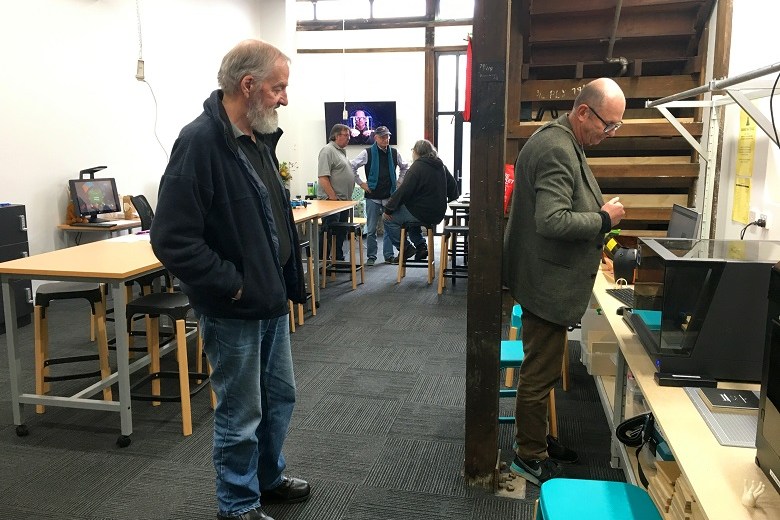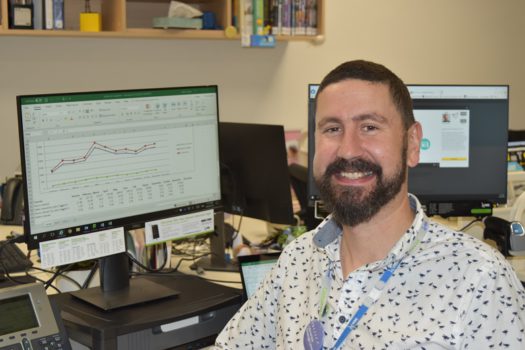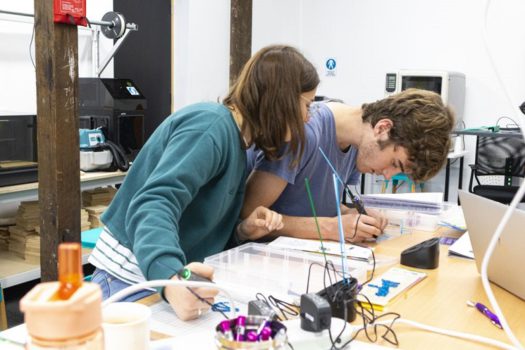
A Melbourne council has turned the traditional concept of a library on its head with the creation of an interactive technology hub, saying public libraries can play a key role in bridging the gap between people and technology.
The Creative Technology Hub in Hobsons Bay, at the Seaworks Maritime Precinct opened last month to provide an interactive community workshop space with new and emerging technologies, programs and activities revolving around Science, Technology, Engineering, Arts and Mathematics (STEAM).

Adam Cooper, Coordinator Service Development of Community Learning and Service Centres for Hobsons Bay City Council, says the idea came about after the library network identified a “learning need” in the community.
“At the time, there was a really strong consensus that libraries should be getting into the space of becoming that bridge between people and technology,” he told Government News.
“Libraries have the ability to be really agile with our programming to respond directly to community need.”
The Hobsons Bay Hub is suitable for different levels of digital literacy, Mr Cooper says.
“There’s people who are already quite digitally literate and we can extend that into areas that they hadn’t looked at before.
“(We can also bridge) that experiential component of people who’ve never actually had much experience with technology and find it quite frightening.”
The opening of the hub comes as the WA government launched a five year strategy to strengthen public libraries in the state, with technology at its heart.
A safe and welcoming space
Mr Cooper says libraries offer a “safe and welcoming space” to bridge the digital divide.
“In a library, it translates to a safe and welcoming experience for people who might otherwise be intimidated by technology.”
The hub is filled with devices, including an industrial-grade 3D printer, laser cutter, 3D scanner, green screen kit and virtual reality headsets.
Library members are also able to borrow robotic kits to program at home and improve their robot-coding skills.
Mr Cooper says it isn’t necessary to have the the latest technology to get benefits.
“While it’s really good to have the most cutting-edge technology, that’s not always what the community is ready for, he says.
“Sometimes it’s about giving people access to the technology that’s out now and it might not be cutting edge.
“Things like 3D printing, they’ve been around for a while, but now a lot of people have really heard about it and that’s what people want to use.”

The hub was initially funded by a grant from the Victorian government, with $115,000 from the Living Libraries Infrastructure Program.
This funding was used by Council to build the hub, which is now completely funded by Council in partnership with Seaworks Foundation.
“What we’re trying to move towards is a model where the community… can come in and it can be more volunteer led,” Mr Cooper said.
“While it’s really good to have the most cutting-edge technology, that’s not always what the community is ready for.” – Adam Cooper, Hobsons Bay City Council
Future of library technology
The virtual reality technology in the hub has been really popular with the community and has been particularly helpful for older people, Mr Cooper said.
“We’re able to go back and do virtual tours of their home… and they can go back to the street where they grew up… and actually feel like they’re in that environment.
“That can be a really profoundly moving experience, so it’s technology connecting people with their past.”
He believes there is emerging technology around virtual reality.
“Augmented reality, I think, will become more commonplace when you’re going to visit spaces,” he said.
“There could be lot of wayfinding and signage happening more digitally – you might put on a pair of glasses or look through your phone to sort of look at signage and things like that.”
The future plan for the hub is to extend it by partnering with the community, Mr Cooper said.
“Building a strong group of volunteers and community members who can help take ownership.
“And help us extend the opening times and the support that we can give to community members who come in.”
Comment below to have your say on this story.
If you have a news story or tip-off, get in touch at editorial@governmentnews.com.au.
Sign up to the Government News newsletter